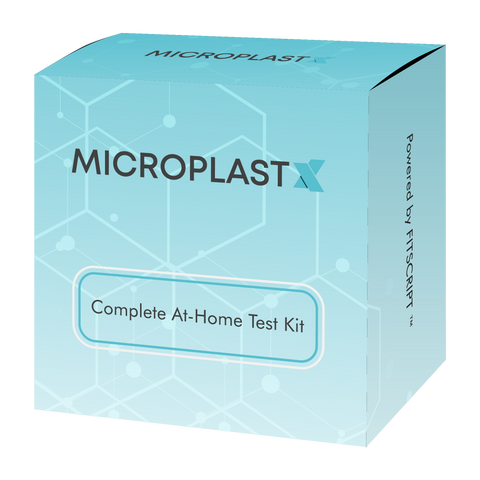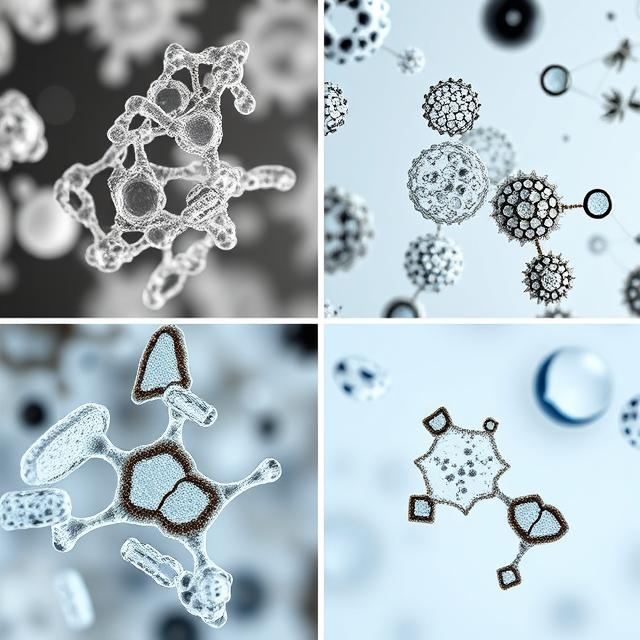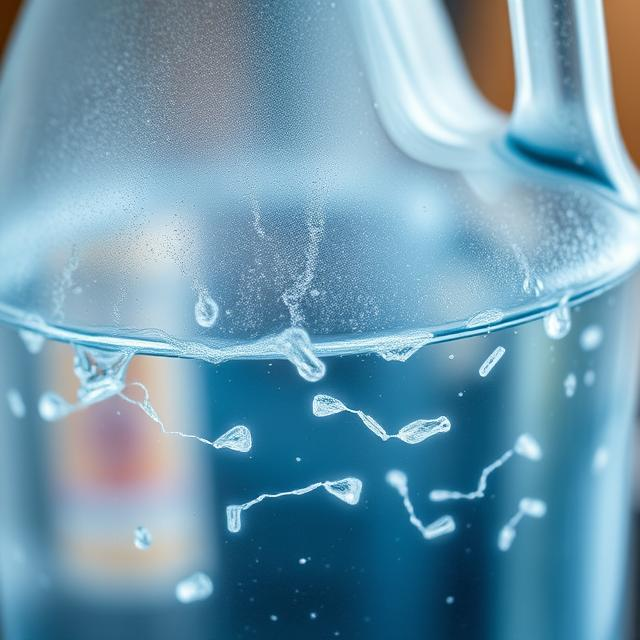How To Avoid Microplastics in Tea Bags: Risks of Commercial Teabags Explained
Tea is often seen as a natural and healthy beverage, but many people are unaware that commercial tea bags may contain microplastics. These tiny plastic particles can leach into hot water when brewing tea, leading to potential health risks.
Research has found that some tea bags, particularly those made from nylon or plastic-sealed paper, release billions of microplastic and nanoplastic particles per cup. This raises concerns about long-term exposure, especially for individuals who consume tea regularly. Ensuring food safety is critical in this context, as the release of microplastics into beverages poses significant health risks.
This article explores how microplastics end up in tea bags, the potential risks associated with their consumption, and what consumers can do to minimize their exposure. Additionally, it examines the role of food contact materials in the contamination of tea.
What are Microplastics and How Do They Get into Tea?
Microplastics are tiny plastic particles, typically smaller than five millimeters, that can originate from the breakdown of larger plastic materials or be intentionally manufactured for industrial purposes. In the context of tea bags, these same plastic fibers and particles are released when hot water interacts with synthetic materials used in the bag’s construction. For instance, materials like nylon and polypropylene, commonly found in some tea bags, can shed tiny plastic particles into your tea when exposed to high temperatures.
Pathways into Tea Bags
Microplastics can find their way into tea bags through several pathways. One primary source is the use of plastic-infused materials in the construction of the tea bags themselves. When these materials come into contact with hot water, they can break down and release microplastics into the other polymer based tea bags. Additionally, microplastics can also be present in the tea leaves, especially if they are grown in areas with significant plastic pollution. The processing and packaging stages of tea production can further introduce microplastics into the tea bags.
It’s important to note that not all tea bags are created equal. Commercially available tea bags, particularly those made from nylon or plastic-sealed paper, have been found to release high levels of microplastics when steeped in hot water. On the other hand, loose leaf tea and paper tea bags, which are often plastic-free, may offer a safer alternative for those looking to minimize their exposure to microplastics.
Understanding the sources and pathways of microplastics into tea bags is crucial for mitigating their impact on human health and the environment. By opting for plastic-free tea bags and choosing loose leaf tea, consumers can significantly reduce their exposure to microplastics drinking tea, and contribute to a more sustainable future.
How Do Microplastics Get Into Tea Bags?
Microplastics in tea bags primarily originate from the materials used in their production, including food packaging materials. Many commercial tea bags are not entirely biodegradable and contain plastic components that break down under high temperatures.
Common Sources of Plastic Particles in Tea Bags
-
Nylon and PET (Polyethylene Terephthalate) Tea Bags
-
Some premium brands use plastic mesh tea bags to create a high-end appearance.
-
A study published in PubMed Central found that a single nylon tea bag released 11.6 billion microplastic particles and 3.1 billion nanoplastics into a single cup of tea when steeped in hot water.
-
Plastic-Sealed Paper Tea Bags
-
Many traditional-looking paper tea bags are not 100% paper but contain a plastic polymer (polypropylene) to seal them.
-
This plastic prevents full biodegradability and contributes to microplastic shedding over time.
-
Microplastic Shedding During Packaging & Storage
-
During manufacturing, transportation, and storage, tea bags may accumulate tiny plastic fragments that end up in brewed tea.
-
Even before steeping, microplastics have been detected in packaged dry tea.
-
The use of plastic food contact materials in tea bag packaging can release microplastics and nanoplastics into consumables, posing potential risks to food safety and public health. Developing regulatory measures and standardized testing is crucial to address these risks.
What Are the Health Risks of Microplastics in Tea Bags for Human Health?
The ingestion of microplastics from tea bags raises concerns about their potential effects on human health. Microplastics can interact with human cells, leading to potential alterations in gene expression and negative health outcomes, including links to various disorders and diseases. Although research is still ongoing, studies have linked microplastic exposure to various health risks. Research has also revealed that microplastics and nanoplastics from tea bags can be absorbed by human intestinal cells, potentially allowing these particles to enter the bloodstream and spread throughout the body, raising concerns about long-term health effects.
Potential Health Concerns
-
Gastrointestinal Issues
-
Microplastics can accumulate in the digestive system, potentially disrupting gut microbiota and leading to inflammation.
-
A study found that prolonged exposure to microplastics may alter gut bacteria, impacting digestion and immune function.
-
Mucus-producing intestinal cells play a significant role in the absorption of micro- and nanoplastics (MNPLs) from food and drink. Increased absorption capability of these cells raises concerns about microplastics reaching the cell nucleus, potentially causing genetic interference and long-term health effects.
-
Endocrine Disruption
-
Many plastics contain chemicals like bisphenol A (BPA) and phthalates, which can interfere with hormonal balance.
-
Regular exposure to these endocrine-disrupting chemicals has been linked to metabolic disorders and reproductive issues.
-
Bioaccumulation of Toxic Substances
-
Microplastics can absorb and transport heavy metals and persistent organic pollutants (POPs), increasing their toxicity when ingested.
-
These substances have been associated with neurological damage and increased cancer risks.
While the long-term effects of microplastic ingestion remain under investigation, growing evidence suggests that reducing exposure is essential for overall health.
Comparing Different Types of Commercially Available Tea Bags
Not all tea bags are created equal when it comes to microplastic content. Plastic tea bags, in particular, have been found to release billions of micro- and nano-sized plastic particles when brewed, raising significant health concerns. These particles can potentially interact with intestinal cells, leading to various health implications. Some tea bags are far more likely to release plastic particles into hot water, while others offer safer, plastic-free alternatives. Understanding the differences can help consumers make healthier choices.
Types of Tea Bags and Their Microplastic Content
-
Nylon and PET (Silken) Pyramid Tea Bags
-
These high-end tea bags are often marketed as luxury or premium due to their elegant, see-through design.
-
These plastic-based tea bags release billions of microplastics into a single cup of tea when steeped at high temperatures.
-
Unlike traditional paper tea bags, they do not decompose, contributing to long-term plastic pollution.
-
Plastic-Sealed Paper Tea Bags
-
Many standard paper tea bags use a polypropylene lining to ensure the bag holds its shape and does not fall apart in hot water.
-
This plastic component prevents full biodegradability and can release microplastics when steeped.
-
Completely Plastic-Free Tea Bags
-
Some brands now offer tea bags made from biodegradable materials like plant-based fibers or organic cotton.
-
These options ensure a zero-microplastic tea-drinking experience while being environmentally friendly.
-
Look for certifications like "plastic-free," "compostable," or "biodegradable" to ensure safer choices.
-
Loose-Leaf Tea (Best Alternative)
-
Using loose-leaf tea with a reusable stainless steel or glass infuser eliminates any risk of microplastic exposure.
-
It also reduces packaging waste, making it the most sustainable option.
Regulations and Industry Responses to Microplastics in Tea Bags
As public awareness of microplastics grows, governments and tea manufacturers are starting to address concerns about plastic contamination in tea bags. However, progress is still slow, and many products on the market continue to contain hidden plastics. To effectively tackle this issue, it is crucial to do further research and develop standardized test methods to assess contamination from microplastics and nanoplastics (MNPL) in food contact materials.
Current Regulations on Plastic in Tea Bags
-
In 2022, the Government of Canada implemented the Single-Use Plastics Prohibition Regulations, targeting items such as checkout bags, cutlery, foodservice ware made from or containing problematic plastics, ring carriers, stir sticks, and straws. However, plastic-sealed tea bags were not included in these regulations and remain widely available in the Canadian market.
-
In the United States, there are currently no specific regulations addressing the use of plastics in tea bags. The U.S. Food and Drug Administration (FDA) oversees materials that come into contact with food, ensuring they are safe for their intended use. However, the FDA has not established specific guidelines concerning microplastics or nanoplastics in food products or packaging. The role of food packaging in contributing to microplastic contamination is significant, and there is a need for regulatory measures to mitigate this issue.
Despite these efforts, many commercial tea brands still use plastic-infused tea bags, meaning consumers must actively seek out plastic-free alternatives.
How Tea Companies Are Responding
Some brands are taking the initiative to move toward more sustainable, plastic-free food packaging continues however. Several major tea brands, including PG Tips and Teapigs, have switched to biodegradable tea bags. However, many brands still use hidden plastics in their packaging. Additionally, some tea companies are shifting away from plastic food contact materials, which helps reduce the release of microplastics and nanoplastics into consumables, benefiting food safety and public health.
Consumers looking for plastic-free tea options should check for:
-
“100% biodegradable” or “compostable” labeling
-
Brands that use cotton, hemp, or plant-based materials
-
Loose-leaf tea sold without plastic packaging
By demanding more transparency from manufacturers and choosing safer options, consumers can help push the tea industry toward more sustainable, microplastic-free solutions.
How to Avoid Microplastics in Tea Bags
With growing awareness about the millions of microplastics in tea, consumers can take steps to minimize their exposure and ensure food safety. From choosing the right tea bags to switching to loose-leaf tea, there are several practical solutions to enjoy a healthier, plastic-free cup.
Steps to Reduce Microplastic Exposure from Tea Bags
Choose Plastic-Free Tea Bags
-
Look for brands that explicitly state their tea bags are biodegradable, compostable, or plastic-free.
-
Avoid tea bags labeled as “silken” or “mesh,” as these are often made from nylon or PET.
-
Be aware of the risks associated with plastic tea bags. Plastic tea bags can release billions of micro- and nano-sized plastic particles when brewed. These particles may interact with intestinal cells, raising health concerns. Opting for plastic-free alternatives can help mitigate these risks.
Switch to Loose-Leaf Tea
-
Loose-leaf tea eliminates the need for tea bags entirely, preventing any risk of microplastic contamination.
-
Use stainless steel, glass, or ceramic tea infusers instead of plastic strainers.
Check Packaging for Hidden Plastics
-
Even if the tea bag itself is plastic-free, some brands use plastic wrappers or linings in their packaging.
-
Opt for brands that use paper or compostable pouches instead of plastic-lined boxes.
Support Sustainable Tea Brands
-
Many eco-friendly tea brands have committed to removing plastic from their products.
-
Consumer demand plays a major role in pushing brands to adopt sustainable practices.
Use a Tea Pot or French Press
-
Instead of using disposable tea bags, brew tea in a teapot or French press for a waste-free alternative.
By making simple switches, tea drinkers can reduce their exposure to microplastics while also minimizing their environmental footprint.
Final Thoughts
Microplastics in tea bags are a hidden source of plastic contamination that many consumers are unaware of. The best way to avoid microplastic exposure from tea is to opt for loose-leaf tea, use plastic-free tea bags, and check product packaging for hidden plastics. By supporting sustainable brands and making informed choices, tea drinkers can enjoy a safer, microplastic-free tea experience.
For those concerned about microplastic contamination in their daily life, testing exposure is the next step. The Microplastix Test Kit allows consumers to analyze microplastic levels in their food, water, and household environment—helping them make smarter, healthier decisions.
Take control of your microplastic exposure today. Test your home, food, and water with the Microplastix Test Kit.




